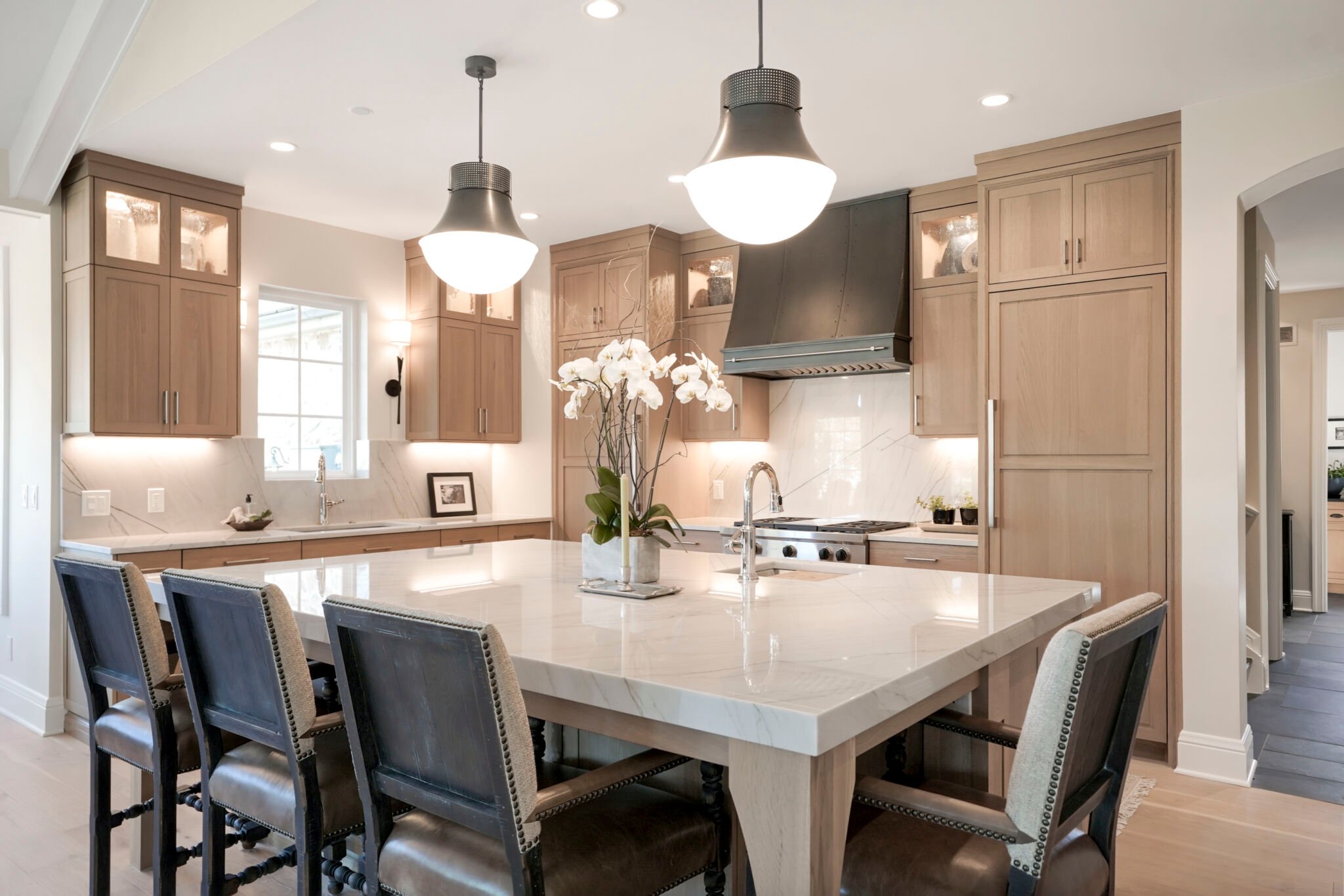
Absolutely, here’s an article on transitional kitchen design:
Harmonizing Elegance: Embracing Transitional Kitchen Ideas
Transitional kitchen design effortlessly blends traditional and contemporary elements, creating a space that’s both timeless and stylish. This versatile style harmonizes classic and modern aesthetics, offering a perfect balance between comfort, sophistication, and functionality.
Merging Traditional and Contemporary Elements
At the heart of transitional kitchen design is the fusion of classic and modern features. Pairing traditional materials like wood or stone with sleek stainless steel appliances or minimalist cabinetry creates a captivating contrast that defines this style. Mixing textures, finishes, and architectural details achieves a cohesive yet eclectic look.
Neutral Color Palettes with Splashes of Contrast
Neutral color schemes form the foundation of transitional kitchens, providing a backdrop for both traditional and contemporary elements. Warm neutrals like beige, cream, or gray set the stage, while pops of color in accents, such as bold artwork, vibrant rugs, or statement lighting, add depth and visual interest.
Streamlined Cabinetry and Functional Layouts
Cabinetry in transitional kitchens often combines elements from both traditional and modern styles. Shaker-style doors with clean lines, simple hardware, and inset panels provide a timeless appeal. The layout emphasizes functionality, offering ample storage and efficient workspace without compromising on aesthetics.
Focus on Natural and Versatile Materials
Incorporating natural materials like wood, stone, or marble into countertops, flooring, or backsplashes adds warmth and texture to transitional kitchens. Versatile materials such as quartz or granite combine durability with a touch of elegance, contributing to the transitional aesthetic.
Blend of Timeless Lighting Fixtures
Lighting plays a pivotal role in transitional kitchens. Incorporating a mix of lighting sources, such as pendant lights, recessed lighting, or under-cabinet lighting, creates layers and adds ambiance. Choosing fixtures that strike a balance between traditional and modern styles enhances the transitional appeal.
For inspiration and guidance in creating your own transitional kitchen, visit Transitional Kitchen Design. Explore a curated collection of ideas, tips, and visuals to craft a timeless yet modern kitchen space.
This article delves into the core principles of transitional kitchen design, focusing on the harmonious fusion of traditional and contemporary elements, neutral color palettes, functional layouts, versatile materials, and the blend of timeless lighting fixtures to create a stylish and enduring kitchen space.









